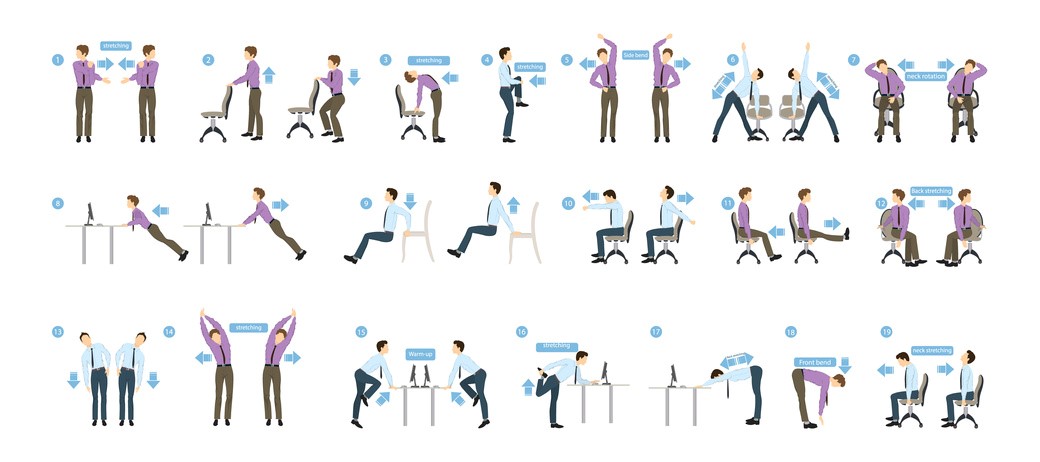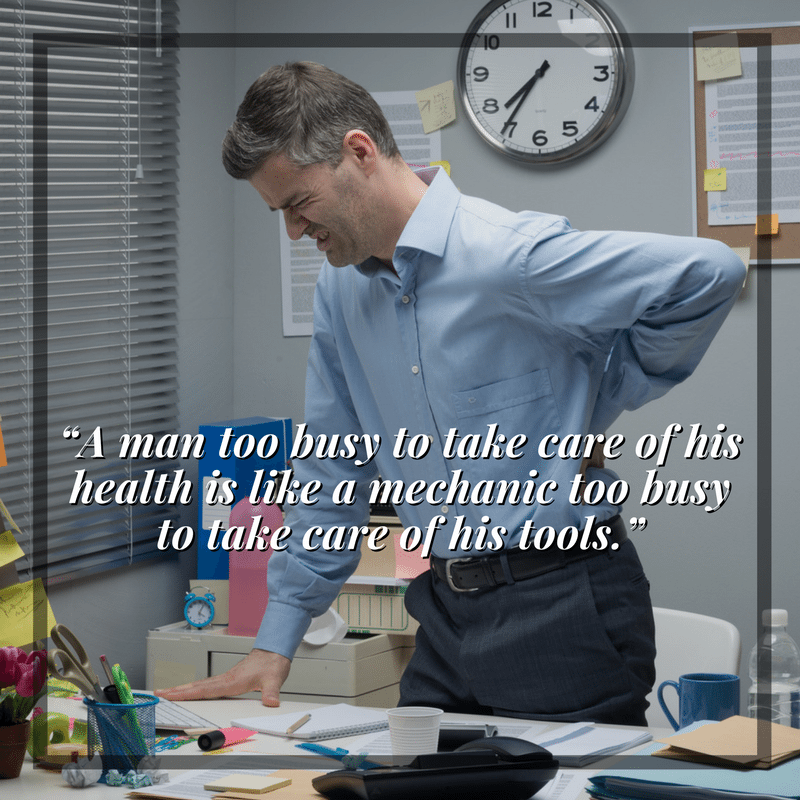How to Know If You Have Sciatic Nerve Pain

Getting a shooting pain down your back can be scary. One second you’re going on with your daily life normally, and the next you’re paralyzed in place; too afraid to move a muscle. What if it gets worse? What if it indicates something serious? And what about this pain that’s hurting too much?
If you’ve experienced this situation before, then a quick search through the internet has probably pointed towards sciatica. Sciatica, sciatic nerve pain, or radiculopathy; all of these are different names for the same condition. However, there’s a common misconception about sciatica. As a matter of fact, sciatica is not a condition. It’s only a symptom that indicates an underlying condition causing your symptoms.

So how do you know if you’re really suffering from sciatica? Let’s find out.
Not all lower back pain results from sciatica. Sciatica can develop and go away in a matter of 4 to 8 weeks, in which case it’s acute and can easily be dealt with. Persisting sciatic nerve pain, however, is chronic and usually needs medical attention.
You might be suffering from sciatica if you experience the following symptoms:

Once the pain has reached a level that worries you, and in case you’ve related to the previous symptoms and risk factors, then seeking a medical opinion becomes your best course of action. During your visit, the doctor will be able to decide on whether or not sciatica is the cause of your symptoms. If they make the diagnosis, then they’ll continue to look for the underlying cause of the sciatic nerve pain.
Your doctor will be able to make a diagnosis based on the following steps:
The first thing they’ll do is ask you some questions. These questions will give them a better understanding of the nature of your symptoms, the risk factors you have, and the probability of having sciatic nerve damage.
Next, they’ll perform a physical examination to test for the degree and onset of pain with certain movements.
If there’s cause to worry, your doctor will order some extra imaging tests to get a better look at your spine, discs, and any abnormalities.

Depending on the degree of damage and the intensity of pain, sciatica can be treated in different ways. Specialized therapists develop customized programs to address the needs of each of their patients individually, as each patient will require their own course of treatment. Some of the best practices in treating sciatica, as explained by the specialized therapists at Dean's Sports Therapy are sciatic nerve stretches, tight muscle treatments, a pinched nerve in the skin treatment, cupping, physical therapy, and chiropractic care. These methods also act as preventive measures against the recurrence of sciatica.
On the other hand, there are some DIY treatments for acute sciatica that can be done at home. These treatment options include cold and hot presses, stretching exercises, and over-the-counter pain medications. If the pain persists, then seeking the consultation of a specialized doctor is necessary. The doctor may prescribe you certain pain medications, give you a steroid injection, or recommend surgical procedures if deemed essential.

While developing sciatic nerve pain can result from many causes, around 90% of the cases are due to a herniated disc. This means that one of the discs in the vertebral column (the spine) has somewhat slipped from its position, to put it in simple terms. When that happens, the portion of the slipped disc places a strain on the spinal cord. In this case, it’s pressing on the sciatic nerve passing through the spinal cord.
There are some risk factors that can increase the onset of sciatica. These risk factors include the following:
Aging changes the body in many ways, and it can be the culprit behind your sciatic pain. As you age, your body changes on a structural and physiological level. Bones and muscles can both weaken, and if that happens, the herniation of spinal discs may be more probable.
Increased weight places a lot of pressure on different body parts, and the spine is no exception. Increased pressure imposed on the spine as a result of obesity can cause damage to the vertebral column, which could accelerate the onset of sciatica.

If your work includes a lot of heavy liftings, such as working in a field or as a bodybuilder, then you can be more prone to developing sciatica. This comes from the added pressure you exert on your spinal column. If your back muscles aren’t strong enough to hold the pressure, the weight you’re carrying will be placed directly on the spine; which can result in a herniated disc.
Your lifestyle habits can also increase your risk of developing sciatica. If you spend prolonged hours sitting while watching TV or using your laptop, it can result in symptoms of sciatica. The risk becomes even greater if you carry yourself around in a wrong posture that places extra pressure on your discs.
If uncontrolled, diabetes can damage the nerves directly. If the nerve damage occurs in your sciatic nerve, you’ll develop its symptoms.
Sciatica has some characteristic symptoms, and checking one or more of its risk factors can increase its probability. In case you’re complaining of back pain that keeps getting worse, it’s a good idea to seek medical attention. Your doctor will do the necessary tests to make the proper diagnosis. If the diagnosis is made, you’ll have a customized treatment plan to help you with your pain and relieve its underlying condition.

If you’ve experienced this situation before, then a quick search through the internet has probably pointed towards sciatica. Sciatica, sciatic nerve pain, or radiculopathy; all of these are different names for the same condition. However, there’s a common misconception about sciatica. As a matter of fact, sciatica is not a condition. It’s only a symptom that indicates an underlying condition causing your symptoms.

So how do you know if you’re really suffering from sciatica? Let’s find out.
Symptoms Of Sciatica
Not all lower back pain results from sciatica. Sciatica can develop and go away in a matter of 4 to 8 weeks, in which case it’s acute and can easily be dealt with. Persisting sciatic nerve pain, however, is chronic and usually needs medical attention.
You might be suffering from sciatica if you experience the following symptoms:
- The pain is restricted to one lower side of your body; affecting your glutes and extending through one leg.
- The pain is associated with a feeling of numbness, or sometimes a feeling of pins and needles, or an electric shock shooting down your leg.
- You experience lower back pain.
- The pain is not dull, instead, it’s sharp, burning, numbing, or tingling.
- Sometimes you feel as if the affected leg is weakened, and it can give away once you stand on it for support.
- The pain you’re feeling gets worse with activities such as sitting, standing, or walking, but it gets relieved when you lie down.

Diagnosis of Sciatica
Once the pain has reached a level that worries you, and in case you’ve related to the previous symptoms and risk factors, then seeking a medical opinion becomes your best course of action. During your visit, the doctor will be able to decide on whether or not sciatica is the cause of your symptoms. If they make the diagnosis, then they’ll continue to look for the underlying cause of the sciatic nerve pain.
Your doctor will be able to make a diagnosis based on the following steps:
- Patient History
The first thing they’ll do is ask you some questions. These questions will give them a better understanding of the nature of your symptoms, the risk factors you have, and the probability of having sciatic nerve damage.
- Physical exam
Next, they’ll perform a physical examination to test for the degree and onset of pain with certain movements.
- Imaging tests
If there’s cause to worry, your doctor will order some extra imaging tests to get a better look at your spine, discs, and any abnormalities.

Sciatic Nerve Pain Treatment
Depending on the degree of damage and the intensity of pain, sciatica can be treated in different ways. Specialized therapists develop customized programs to address the needs of each of their patients individually, as each patient will require their own course of treatment. Some of the best practices in treating sciatica, as explained by the specialized therapists at Dean's Sports Therapy are sciatic nerve stretches, tight muscle treatments, a pinched nerve in the skin treatment, cupping, physical therapy, and chiropractic care. These methods also act as preventive measures against the recurrence of sciatica.
On the other hand, there are some DIY treatments for acute sciatica that can be done at home. These treatment options include cold and hot presses, stretching exercises, and over-the-counter pain medications. If the pain persists, then seeking the consultation of a specialized doctor is necessary. The doctor may prescribe you certain pain medications, give you a steroid injection, or recommend surgical procedures if deemed essential.

Causes And Risk Factors Of Sciatica
While developing sciatic nerve pain can result from many causes, around 90% of the cases are due to a herniated disc. This means that one of the discs in the vertebral column (the spine) has somewhat slipped from its position, to put it in simple terms. When that happens, the portion of the slipped disc places a strain on the spinal cord. In this case, it’s pressing on the sciatic nerve passing through the spinal cord.
There are some risk factors that can increase the onset of sciatica. These risk factors include the following:
1. Age
Aging changes the body in many ways, and it can be the culprit behind your sciatic pain. As you age, your body changes on a structural and physiological level. Bones and muscles can both weaken, and if that happens, the herniation of spinal discs may be more probable.
2. Obesity
Increased weight places a lot of pressure on different body parts, and the spine is no exception. Increased pressure imposed on the spine as a result of obesity can cause damage to the vertebral column, which could accelerate the onset of sciatica.

3. Your Work
If your work includes a lot of heavy liftings, such as working in a field or as a bodybuilder, then you can be more prone to developing sciatica. This comes from the added pressure you exert on your spinal column. If your back muscles aren’t strong enough to hold the pressure, the weight you’re carrying will be placed directly on the spine; which can result in a herniated disc.
4. Lifestyle Habits
Your lifestyle habits can also increase your risk of developing sciatica. If you spend prolonged hours sitting while watching TV or using your laptop, it can result in symptoms of sciatica. The risk becomes even greater if you carry yourself around in a wrong posture that places extra pressure on your discs.
5. Diabetes
If uncontrolled, diabetes can damage the nerves directly. If the nerve damage occurs in your sciatic nerve, you’ll develop its symptoms.
Sciatica has some characteristic symptoms, and checking one or more of its risk factors can increase its probability. In case you’re complaining of back pain that keeps getting worse, it’s a good idea to seek medical attention. Your doctor will do the necessary tests to make the proper diagnosis. If the diagnosis is made, you’ll have a customized treatment plan to help you with your pain and relieve its underlying condition.

Resources:
- https://www.mayoclinic.org/diseases-conditions/sciatica/symptoms-causes/syc-20377435
- https://www.medicalnewstoday.com/articles/7619.php#diagnosis
- https://www.healthline.com/health/sciatica#treatment
- https://www.webmd.com/back-pain/guide/sciatica-symptoms
- https://www.webmd.com/back-pain/what-is-sciatica#1
- https://www.mydr.com.au/pain/7-signs-you-may-have-sciatica




































































































